The Aztec Government System
The Aztec government wasn't your typical sit-in-an-office-all-day affair. It was a mix of military might, religious duties, and a massive tribute collection service. Let's break down how this complex system kept a huge empire in line.
The Triple Alliance
The whole thing kicked off in 1428 with the Triple Alliance, a team-up of three city-states: Tenochtitlan, Texcoco, and Tlacopan. They joined forces to overthrow the local bully, the Tepanec empire. At first, they were equals, and each city-state ( altepetl ) had its own king ( tlatoani ).
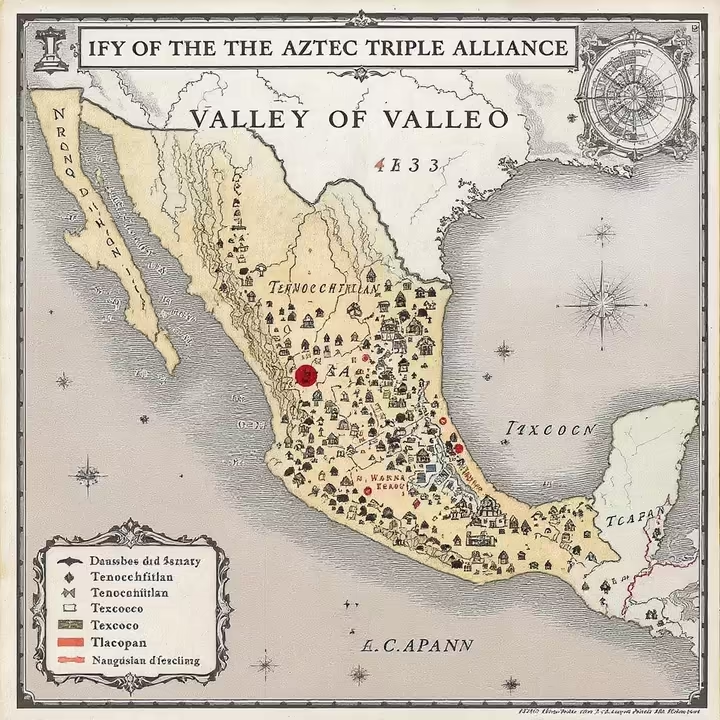
They split the loot from conquests, but not evenly, Tenochtitlan and Texcoco each got two-fifths, while Tlacopan got the leftover one-fifth. Tenochtitlan had the biggest army, so it quickly became the top dog of the group. Texcoco was the brainy one (handling law and culture), but Tenochtitlan was the brawn, calling the shots on military stuff.
Dual Leadership
The Aztecs had two top bosses, not one. This setup split the big-picture empire stuff (like war) from the day-to-day running of the city.
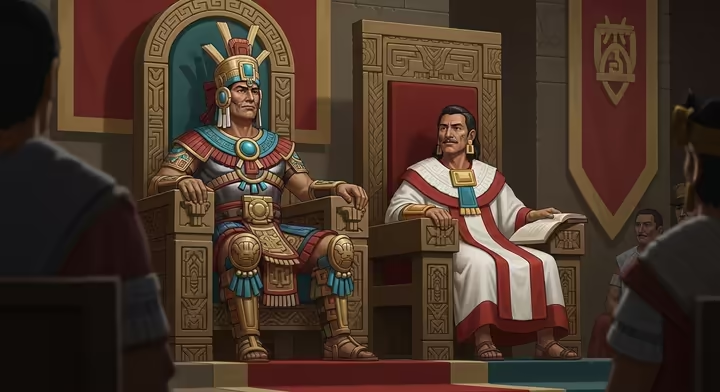
The Huey Tlatoani: Supreme Commander
The head honcho was the Huey Tlatoani , or "Great Speaker." He had the final say on everything important... war, religion, you name it. He was both the commander-in-chief leading the army and the top priest making sure the gods were happy (especially their main god, Huitzilopochtli).
The Cihuacoatl: Head of Internal Affairs
The second-in-command was the Cihuacoatl . The name means "Snake Woman" (even though it was always a guy). He was like a prime minister, handling the boring-but-important stuff: money, taxes, and running the capital city. He was also the top judge.
Succession and Military Merit
Becoming the next Huey Tlatoani wasn't automatic. When a ruler died, a council of top nobles picked the best man for the job from the royal family, usually a brother or nephew. The number one requirement? You had to be a great warrior. To prove it, the new ruler would immediately start a "coronation war" to show everyone who was boss.
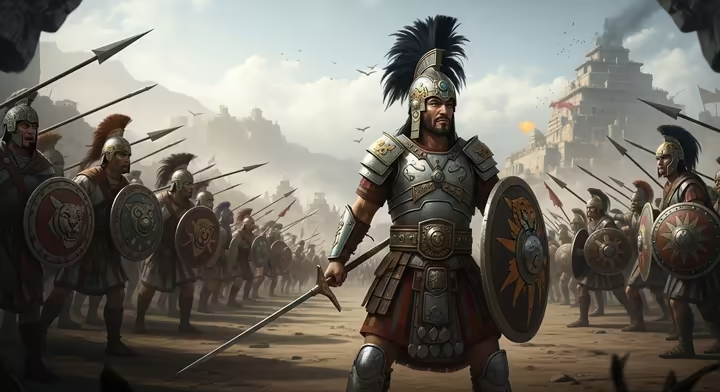
Ruling the Provinces
The Aztecs were pretty hands-off with the places they conquered. They usually let the local kings ( tlatoani ) stay in charge of their city-states ( altepetl ). This was totally different from the Incas, who would send in their own governors to run everything.
Of course, there were strings attached. Conquered kings had to promise loyalty, pay tribute twice a year, and send soldiers for Aztec wars. Tribute collectors ( calpixque ) were stationed everywhere to make sure people paid up. If a place got rowdy, the Aztecs would send in a military governor ( cuauhtlatoani ) and an army to keep the peace.
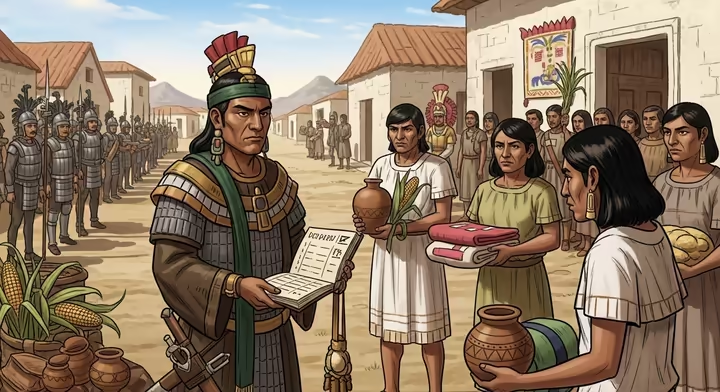
Society and Social Structure
The Calpulli: The Community Unit
Each calpulli had its own land and was responsible for paying its share of tribute to the state. They even had their own schools ( telpochcalli ) where regular boys got military training. This kept the Aztec army full of fresh recruits.
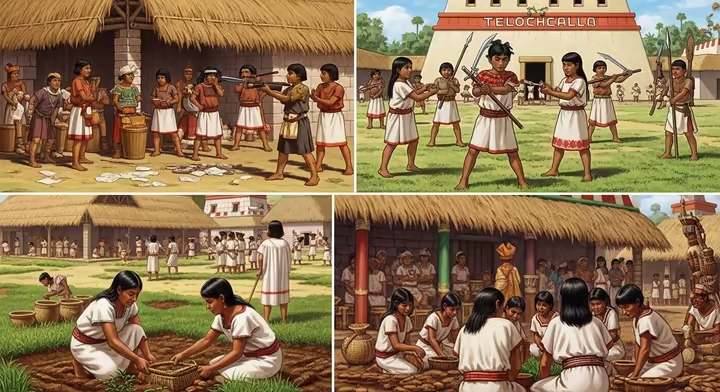
Climbing the Social Ladder
Aztec society was split into classes. At the top were the nobles ( pipiltin ), who got all the best jobs in government and religion... and didn't have to pay taxes. Most people were commoners ( macehualtin ), who did the farming and paid tribute.
But you could move up! A commoner who was a rockstar on the battlefield could become a noble. There were also special groups like the pochteca (merchants who doubled as spies) and slaves ( tlacotin ), who actually had some legal rights.
How They Kept Control
The Aztec legal system was serious about keeping order. They had courts for everything, all the way up to a supreme court run by the Cihuacoatl . And get this, nobles who broke the rules got punished *worse* than commoners, because they were supposed to know better.
Curious what those laws actually were? Explore the Aztec legal system to see how justice worked, from property disputes to capital punishment.
Tribute was the fuel that ran the empire. We know from records like the Codex Mendoza that tons of goods flowed into the capital from all over. We're talking food, fancy feather costumes, gold, you name it. This stuff paid for everything.
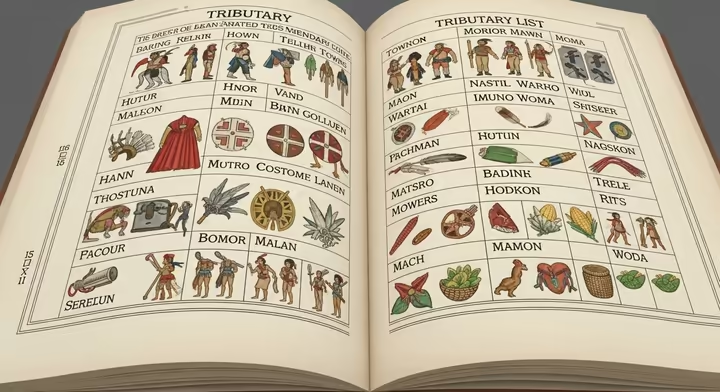
Religion also played a huge part. Priests taught that war was a holy duty to capture people for sacrifice. This kept the gods happy and the universe in balance... or so they said. Elite warriors like the Eagles and Jaguars helped enforce this mix of law, tribute, and religion that kept the empire strong.
The Big Picture
The aztec government system wasn't static; it changed over time. Rulers like Moctezuma II made it more centralized and powerful. It was a clever mix of direct control at the center and letting local guys run the show on the outskirts. This allowed them to build a massive tribute-collecting empire, much different from the scattered Maya city-states.
You can dive deeper into Aztec politics to see how leadership, power, and diplomacy worked behind the scenes, shaping everything from war decisions to alliances.
And compared to the super-controlling Incas, the Aztecs were more laid-back, letting local economies do their thing. This unique setup helped them grow fast. But... it also meant that a lot of conquered people weren't exactly loyal, which became a big problem later on.